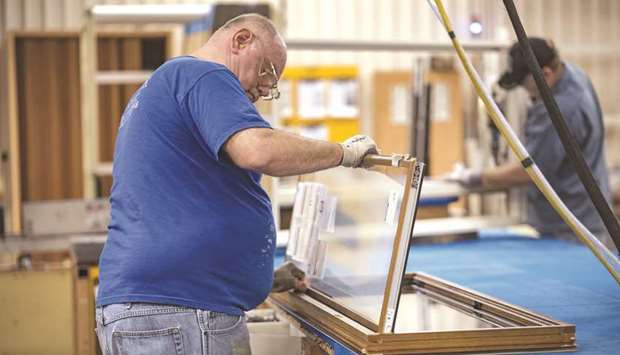The Commerce Department’s report yesterday could prompt economists to raise their economic growth estimates for the first three months of the year.
They were slashed last week after data showed retail sales fell in February for the third month in a row.
The Federal Reserve on Wednesday painted an upbeat picture of the economy when it raised interest rates and forecast at least two more increases for 2018.
Orders for non-defence capital goods excluding aircraft, a closely watched proxy for business spending plans, jumped 1.8% last month.
That was the biggest gain in five months and followed a downwardly revised 0.4% decrease in January.
Economists polled by Reuters had forecast those orders rising only 0.8% in February after a previously reported 0.3% decline in January.
Core capital goods orders increased 7.4% on a year-on-year basis.
Shipments of core capital goods increased 1.4% last month, the biggest advance since December 2016, after an upwardly revised 0.1% gain in January.
Core capital goods shipments are used to calculate equipment spending in the government’s gross domestic product measurement.
They were previously reported to have slipped 0.1% in January.
Business spending on equipment powered ahead in 2017 as companies anticipated a hefty reduction in the corporate income tax rate.
The Trump administration slashed that rate to 21% from 35% effective in January.
US financial markets were little moved by the data as investors worried that President Donald Trump’s announcement on The US tariffs on up to $60bn of Chinese goods could start a global trade war.
Prices of US Treasuries were mixed while US stock index futures were largely flat.
The dollar fell against a basket of currencies.
The surge in core capital goods orders in February suggests further gains.
There had been concerns spending could slow sharply after double-digit growth in the past quarters.
Investment in equipment is likely to be bolstered by robust business confidence, strengthening global economic growth and a weakening dollar, which is boosting demand for US exports.
That is helping to support manufacturing, which accounts for about 12% of US economic activity.
The strength in core capital goods shipments, together with a surge in industrial production in February, could help offset the impact of soft consumer spending on first-quarter growth.
The Atlanta Federal Reserve is forecasting gross domestic product increasing at a 1.8% annualised rate in the first three months of the year.
The government reported last month that the economy grew at a 2.5% pace in the fourth quarter.
However, revisions to December data on construction spending, factory orders and wholesale inventories have suggested the fourth-quarter growth estimate could be raised to a 3.1% pace.
The government will publish its third GDP estimate on Wednesday.
Last month, orders for machinery soared 1.6%. There were also hefty increases in orders of primary metals and electrical equipment, appliances and components.
Orders for computers and electronic products fell 0.2%, with bookings for communications equipment recording their biggest drop since December 2015.
Overall orders for durable goods, items ranging from toasters to aircraft that are meant to last three years or more, vaulted 3.1% last month as demand for transportation equipment soared 7.1%. That followed a 3.5% tumble in January.
Orders for motor vehicles and parts increased 1.6% last month after edging up 0.1% in January.



